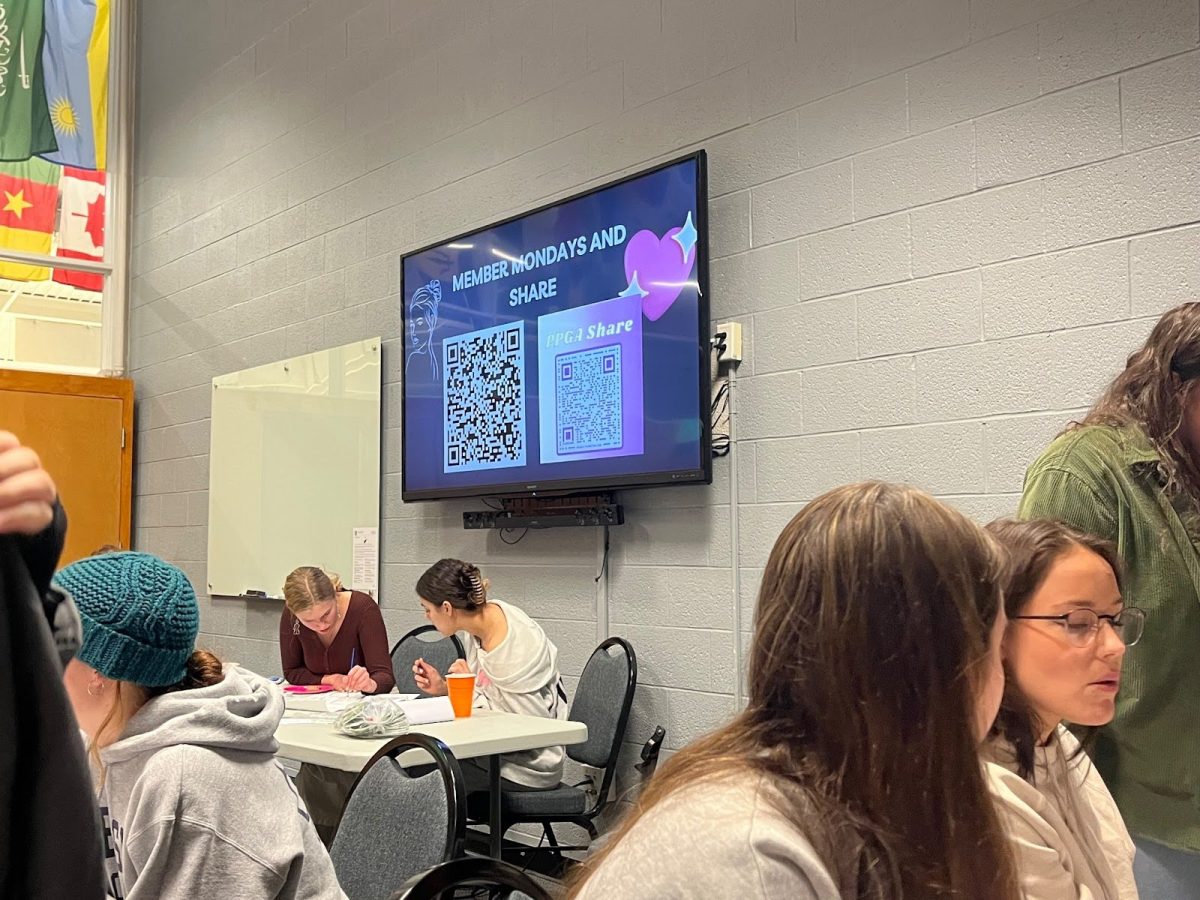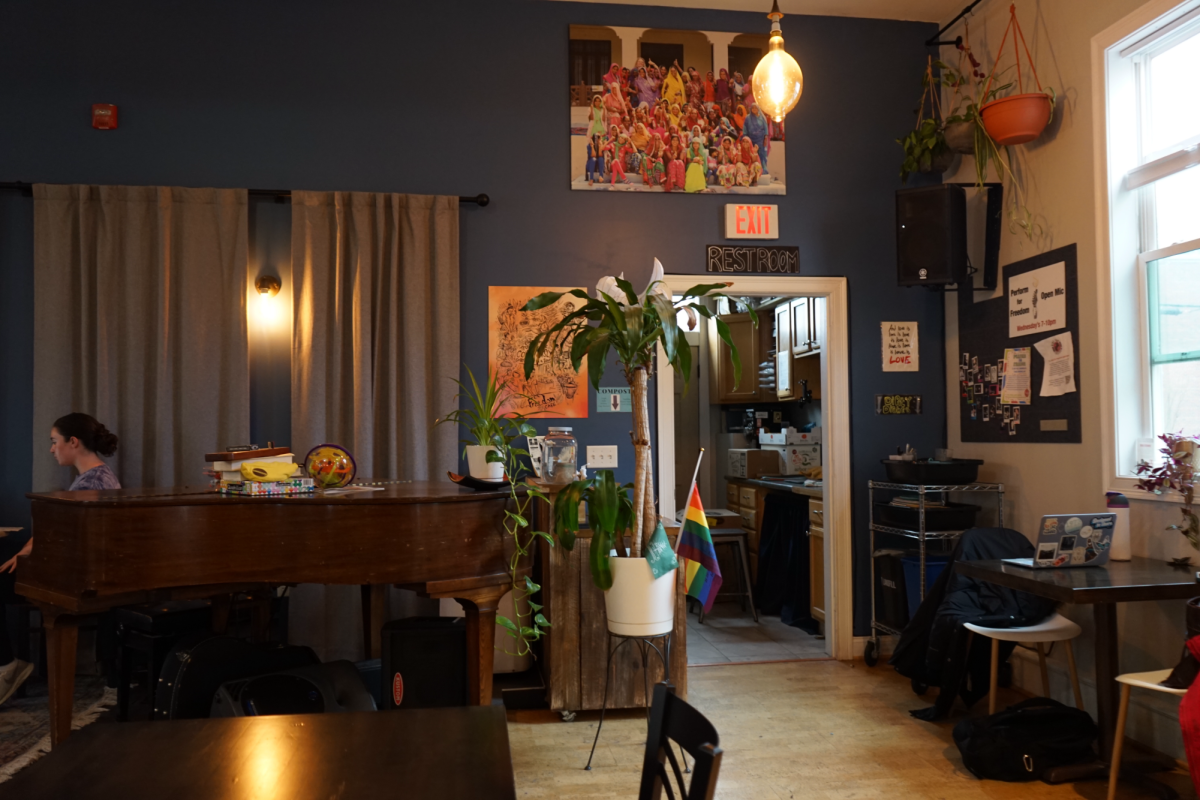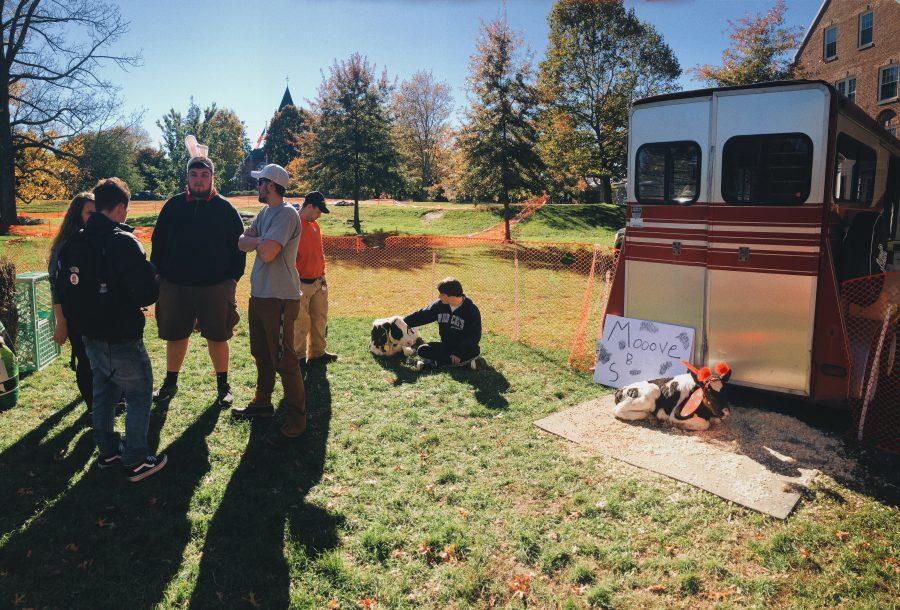
UNH students and faculty members gathered in James Hall on Wednesday, Oct. 12 to enjoy treats and beverages with members of the College Woods Coalition in celebration of College Woods Day. Among these individuals was Arthur Borror, a former zoology professor who spent 35 years at UNH.
Attendees gathered around as Linda Isaacson, a retired UNH professor of natural resources and an outstanding member of the College Woods Coalition, presented Borror with mementos of appreciation. These gifts included a College Woods t-shirt, Isaacson’s homemade painted note cards with descriptions courtesy of forest professor James Barrett of the College of Natural Resources, and a hat with the College Woods logo.
The presentation gave attendees an opportunity to understand Borror’s impact within the university as a man not only described by former students as a remarkable teacher and naturalist, but also a former attendee of the first ever College Woods dedication ceremony in 1962. Alongside many College Woods enthusiasts, the 2016 rededication event celebrated 54 years of the beautiful natural area that many Wildcats have grown to enjoy and love.
The College Woods embodies 250 acres of land, 64 of which are untouched. Many members of the coalition, including honorary member and UNH Student Activity Fee Consultant Julie Perron, said that they feel UNH is very fortunate to have such conserved lands on its property, which began with Ben Thompson donating 250 acres of his woodlot in 1891 to what is now UNH.
To this day, however, that land does not have legal protection.
“The main goal of the coalition is to serve as a living archive of woods history, to encourage awareness of the woods and issues that may affect it and to work to keep the area open, preserved and enjoyable for generations of Wildcats in years to come,” Perron said.
After attendees finished their snacks and refreshments, the group continued the session with a short hike in the woods that the day was focused on.
The College Woods Coalition’s belief that the woods provide many benefits to the UNH student body proved to be true, as the group passed students trail-running, biking or just taking a stroll. This observation was noted and pointed out by Borror as he stopped the group before the “College Woods Natural Area” wooden sign.
The bulk of Borror’s discussion consisted of his first experiences with the woods and some of the ways he has been able to utilize the area for educational purposes. Before the College Woods area was formed, Borror said he stumbled upon saplings that appeared to have been chopped up five or six years prior. According to Borror, it was the result of a forestry management class girdling small saplings of secondary importance to release the trees that were of higher importance for whatever purpose. He noted that the chops were imperfect, so channels by which growth could occur were still existent. Today, the saplings have transformed into spirally looking trees that were once girdled in the mid-1950s.
 “The woods can tell you an awful lot about what’s going on and I think that’s really cool,” Borror said.
“The woods can tell you an awful lot about what’s going on and I think that’s really cool,” Borror said.
The group was then led to the Paul Bunyan tree, a white pine that is 49.2 inches in diameter and almost 13 feet in circumference, standing approximately 120 feet tall.
“Everything about Paul the mythical giant lumberjack of the north woods was huge,” 10-year member of the coalition and Department of Natural Resources and the Environment Associate Professor Thomas Lee said. “So I guess it seemed right for early UNH forestry students and faculty to name the largest tree in College Woods after him.”
Borror said that when he taught he would oftentimes lead his environmental biology and general biology classes to the Paul Bunyan pine to allow them to experience the natural stillness of the area, as he said he is a strong believer that the natural land adds an overall quality and attractiveness to the campus that cannot be ignored.
“I think there are qualities of a university that can be measured by means other than just dollars and cents,” Borror said. “[The woods] adds a perspective to the understanding of land use and allows students to have a special interest with the natural world.”

























